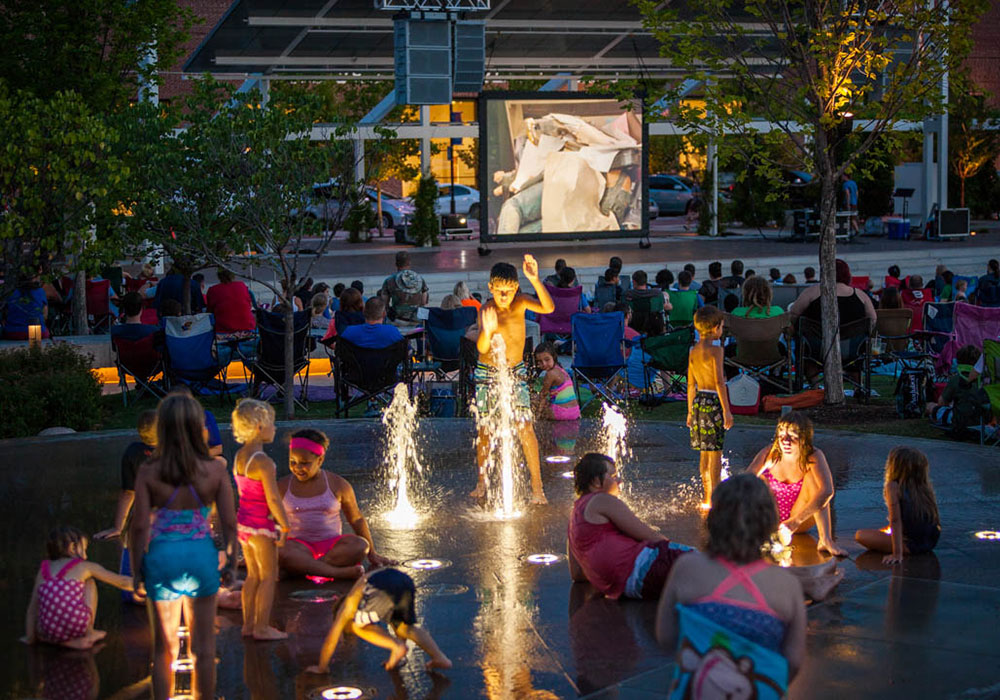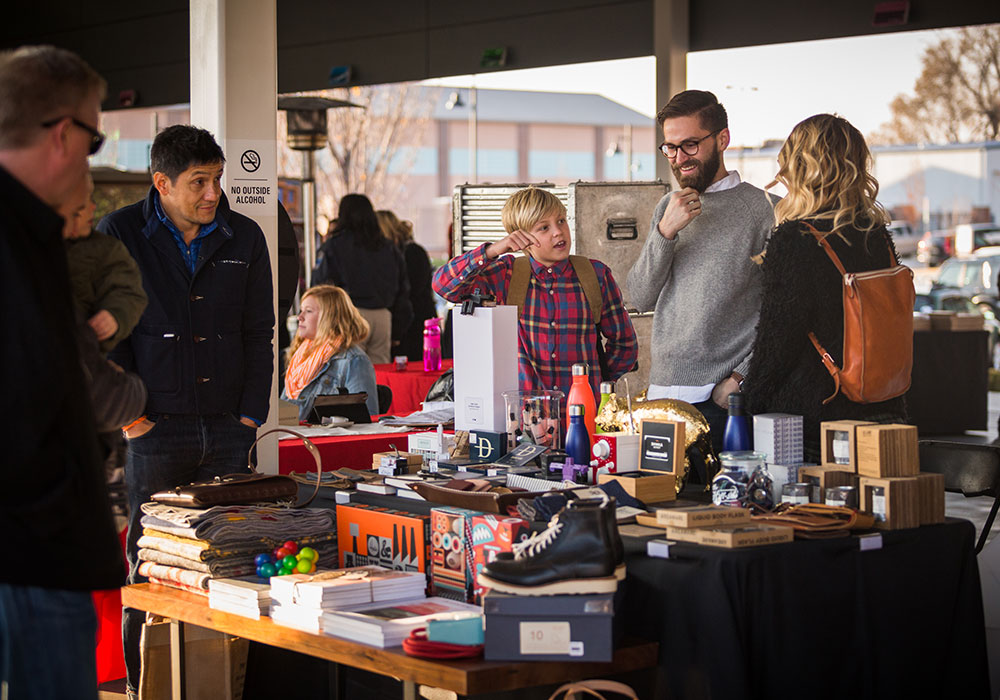Guthrie Green: Tulsa, Oklahoma

Summary
Tulsa, Oklahoma’s Guthrie Green is an example of the successful conversion of a blighted industrial site into a vibrant urban community space that helps drive economic development in a formerly sleepy downtown neighborhood.

Children enjoying a splash pad. Photo by Derrick Weber.
Designated Area
The 2.2 acres of green space in the middle of the Brady Arts District are bound by M.L.K. Jr Boulevard and North Boston Avenue between East Cameron Street and East Mathew B. Brady Street.

Park goers enjoying Food Truck Wednesday. Photo by Shane Brown.
Planning Excellence
Looking out on the foliage of Guthrie Green, it is hard to imagine it was once an industrial site. The park fills one square block and features a stage, The Dock pavilion, tree-lined paths, shady structures, water features, and a large lawn used for year-round community programming.
The transformation came about through the efforts of the George Kaiser Family Foundation and its community partners.
In 2009, the foundation began work on what would become Guthrie Green, engaging Creative Community Builders to help community stakeholders craft a vision for their neighborhood to inform the development of several projects. This process resulted in a plan adopted by the City of Tulsa as a Small Area Plan in 2013.
Once a location for heavy industry, the site of Guthrie Green has been completely transformed into a demonstration project for green technology. Water runoff is treated through bioswales that allow absorption of the water into the landscape. LED lighting and solar panels help reduce electricity demand, and 150 wells serve ground-source heat pumps at the neighboring Tulsa Paper Company and Hardesty Visual Arts Center, reducing the cost of heating and cooling 120,000 square feet of nonprofit space.
Installing the wellfield required the removal of 12 underground fuel tanks; reclamation of the dirt; and two EPA Brownfields Training, Research, and Technical Assistance Grants totaling $975,000.
A key element of Guthrie Green’s success is its programming. The George Kaiser Family Foundation and its partners developed an intensive programming plan to attract people to Guthrie Green every day. There are weekly concerts, daily fitness activities, children’s activities, and a variety of festivals. Guthrie Green opened in September 2012 and has since been a catalyst for the redevelopment and adaptive of reuse of the industrial and traditional commercial buildings within the Brady Historic District. It has attracted thousands of people to the neighborhood.

The annual Glow on the Green event. Photo by Shane Brown.
Defining Characteristics, Features
- The successes of Guthrie Green have not gone unrecognized. In addition to being named a 2016 APA Great Public Space, the green won a Brownfields for Energy Award (from Brownfield Renewal magazine) in 2013, and several awards from local publications.
- The park is accessible on all sides for all people through curb cuts, crossing indicators, and ramps. Local fare free “trolley” (bus) offers rides around downtown, including to the park.
- Bordering uses include a mix of bars, restaurants, museums, housing, and downtown attractions. Across the street to the south are contemporary art museums and the Woody Guthrie Center. Small businesses around the park provide a place for lunch and after-work activities.
- Programming on Guthrie Green includes food truck Wednesdays, Fitness on the Green, Movies on the Green, a summer concert series, and a Lindy in the Park sock hop style swing dance event every second Friday. The events are presented by various organizations drawing diverse audiences from all over the region.
Pertinent Plans and Documents


